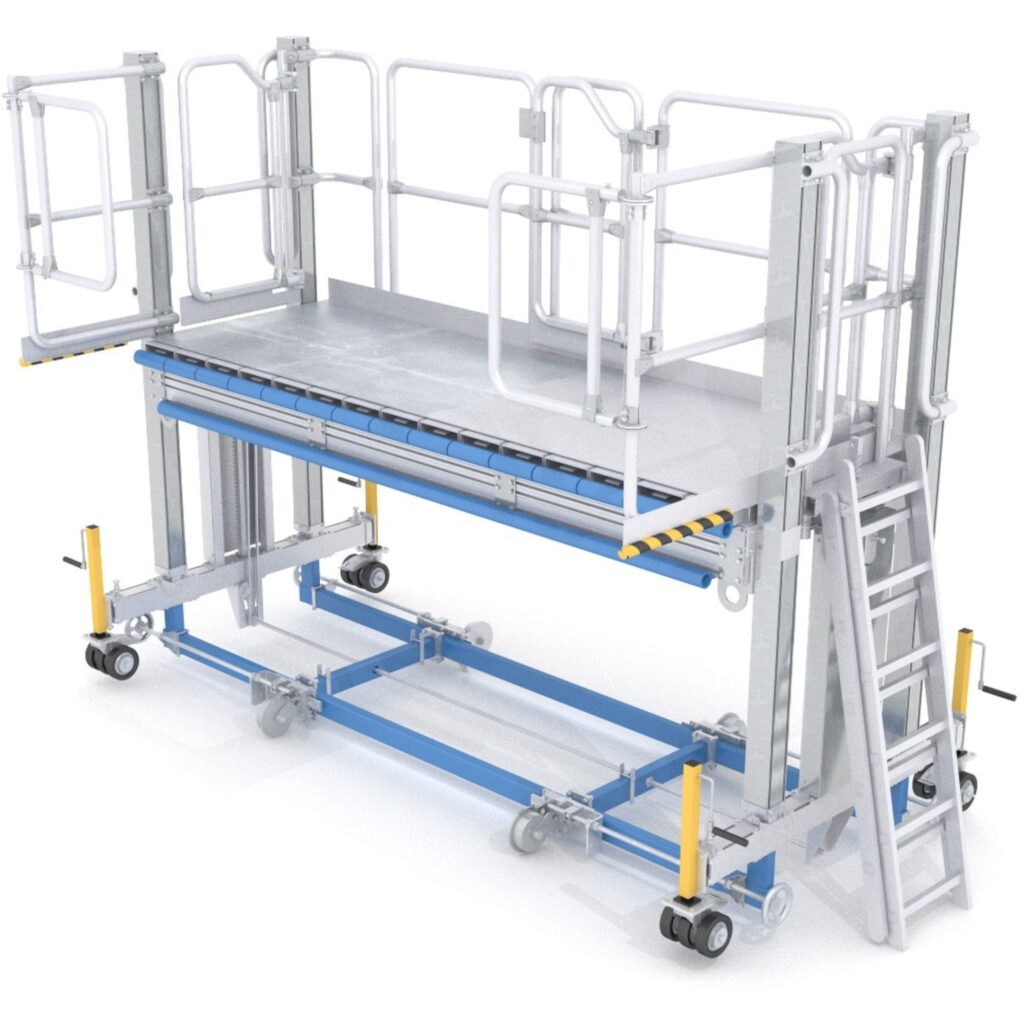
Work platforms, also known as aerial work platforms (AWPs) or elevated work platforms (EWPs), are essential tools in various industries, allowing workers to safely access elevated areas for tasks like construction, maintenance, inspection, and cleaning. This article delves into the different types of work platforms, their applications, safety considerations, and factors to consider when choosing the right platform for your needs.
Types of Work Platforms: Finding the Right Fit
The diverse work platform options cater to various work environments and requirements. Here are the most common types:
- Scissor Lifts: Offering a stable platform with variable reaching heights, scissor lifts are ideal for indoor and outdoor tasks on level surfaces.
- Boom Lifts: With their articulated arms, boom lifts provide precise placement and access to hard-to-reach areas, making them suitable for uneven terrains and complex tasks.
- Telehandlers: Combining telescopic reach and lifting capabilities, telehandlers excel in construction, material handling, and other applications requiring significant height and load capacity.
- Mast Lifts: These compact and vertical-reaching platforms are perfect for indoor maintenance and confined spaces.
- Personnel Lifts: Designed for transporting workers vertically, personnel lifts are common in window cleaning, painting, and building inspections.
Applications of Work Platforms: Reaching New Possibilities
Work platforms are utilized across various industries and tasks, including:
- Construction: Building erection, facade installation, roofing, and electrical work.
- Maintenance: Inspecting and repairing machinery, cleaning windows, and painting high surfaces.
- Events: Setting up lighting, audio equipment, and rigging for concerts and festivals.
- Tree care: Pruning, trimming, and removing branches at heights.
- Film and television: Setting up cameras, lights, and other equipment for filming.
Safety First: Essential Considerations for Work Platform Use
Working at heights comes with inherent risks. Prioritizing safety is paramount when using work platforms:
- Always follow manufacturer instructions and safety guidelines.
- Conduct thorough pre-use inspections, ensuring stable ground and platform functionality.
- Operators must be trained and possess valid licenses for specific platform types.
- Utilize fall protection equipment like harnesses and lanyards.
- Maintain clear communication and awareness of surroundings while working.
Choosing the Right Work Platform: Tailoring to Your Needs
Selecting the appropriate work platform involves considering several factors:
- Required working height and reach.
- Weight capacity for personnel, tools, and materials.
- Terrain conditions and accessibility.
- Indoor or outdoor environment.
- Budget and rental or purchase options.
Consulting with platform rental companies or equipment specialists can help you make an informed decision based on your specific needs and project requirements.
Step Up Safely and Efficiently: Work Platforms Enhance Your Reach
Work platforms empower workers to safely access elevated areas, fostering efficient completion of various tasks across diverse industries. By understanding the different types, applications, safety protocols, and selection factors, you can leverage these invaluable tools to reach new heights – literally and figuratively – in your projects.
FAQ:
Q: What are the different types of work platforms?
A: Common types include scissor lifts, boom lifts, telehandlers, mast lifts, and personnel lifts, each with unique advantages for specific tasks and environments.
Q: What safety measures are essential when using work platforms?
A: Always follow manufacturer instructions, conduct pre-use inspections, ensure operator training and licensing, utilize fall protection gear, maintain clear communication, and be aware of your surroundings.
Q: How do I choose the right work platform for my needs?
A: Consider required height and reach, weight capacity, terrain conditions, environment, budget, and rental/purchase options. Consult with specialists for guidance.
Q: Are there any specific regulations or licenses required for using work platforms?
A: Yes, regulations and licensing requirements vary by region and platform type. Consult relevant authorities for specific details.
Q: Can I use a work platform without training?
A: No, operating work platforms requires proper training and certification. Always ensure qualified personnel operate the equipment.
Q: Where can I rent or purchase a work platform?
A: Numerous equipment rental companies and specialized dealerships offer work platforms. Conduct research and compare options before making a decision.
Conclusion:
Work platforms offer unmatched safety and efficiency for accessing elevated areas in various industries. Understanding their diverse types, applications, safety measures, and selection process empowers you to choose the right platform for your project’s unique needs. By prioritizing safety and utilizing these tools effectively, you can reach new heights in productivity and success.
